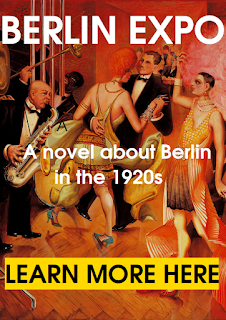"A
walk in the city consists of experiencing the different and dynamic
elements of society of the Weimar Republic: rich and poor, ragged and
powerful; all architectural styles, from neoclassical to modern;
elegant shops next to the motley dwellings of the working class, with
their cheap furniture and oilcloth table covers. Walking through the
city is another way of "living" politics, through street
protests, campaign posters and the headquarters of the various
political parties carrying their banners.
Such
a walk also bears a history lesson, which allows us to consider
various architectural styles, although not much older than the
eighteenth century, the historicist style so prevalent in
19th-century buildings; museums that pay tribute to the past and try
to highlight the relationship between German culture and the wonders
of ancient Greece; monuments such as the Brandenburg Gate and the
Victory Column, erected to the glory of German and Prussian military
victories.
Strolling around the city is to get immersed in a bath of modernity: watching, smelling, chewing traffic jams, the industrial pollution layer, polluted rivers and canals, the rush of jostling crowds, railroad docks and railways. metro cars; the pleasure of feeling the cool breeze and seeing the clear waters of the Wannsee, the tumultuous weekend outings, by tram, train or car; the dazzling lights of cinemas and restaurants, cars and traffic lights, neon advertisements that light up as soon as night falls on the city; the seductive charm of the latest models in the windows. After a long walk, it is time to sit down, this activity that city dwellers love so much and perhaps especially Berliners. Wrapped up to the eyebrows and tired of coping with the cold dampness, at the fleeting first glimpse of spring, they sit down to drink a beer or a coffee, while they watch the people walking in the street, the cars and the trams, the shops across the street, the gray sky."
The text above is an excerpt from Weimar Germany, promise and tragedy, by Eric D. Weitz.
(this is not the original text by professor Weitz, but a rendering from a Spanish version, hence the somewhat clumsy English, which I apologize for)
University of Minnesota history professor Eric D. Weitz has written a book about Weimar Germany. He sees that era as a time of progressive achievements and he views Weimar in its own right, not just as a prelude to the Third Reich.
Link to professor Weitz' book on Amazon



No comments:
Post a Comment